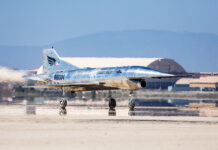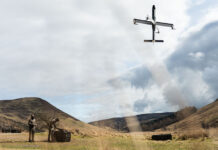Traditionally, the communications relay was considered a secondary mission on a platform deployed on other missions, resulting in reduced performance and availability. However, with the introduction of lightweight, robust and autonomous platforms, capable of deployment from austere and unprepared sites, UAVs can now perform this mission, close to the forward units. Unlike the costly electro-optical sensor package, often exceeding the cost of the aerial platform itself, an airborne relay payload can be produced at a low cost, resulting in a reasonably priced mission platform, that can be operated by signals units of Army or Marine brigades. Such a capability could dramatically expand communications links, primarily over rugged, mountainous or urban terrain. Industry sources have indicated that such aerial radio relay UAV could evolve into an acquisition program addressing near-term operational requirements, to support U.S. Army operations in the Afghanistan. Industry has been addressing these requirements with early demonstrations of new platforms – ideally suited for forward deployment.
An airborne relay can effectively connect to units operating in mountainous area, where terrestrial radio communications are typically masked and screened by the terrain. The CRP operates in the UHF/VHF bands, supporting a variety of frequencies and waveforms, including Single-Channel Ground-Air Radio System (SINCGARS), extending the range between users for voice and data communications, including chat text, instant messaging and imagery.
Harris-supplied Falcon III radios have been operating in Shadow 200 unmanned aerial vehicles (UAVs) as part of an airborne relay system, extend the distance of terrestrial communication. The Shadow 200 carries two Falcon III single-channel SINCGARS combat net radio sets mounted in special fairings on the UAV’s tail booms. The U.S. Army first deployed the Communication Relay Package-Light (CRP-L) in Iraq in mid-2007. Flying at a typical altitude of 14,000 ft. above sea level, the CRP-L system extended the range of tactical communications to around 170 km, far beyond the line-of-sight range of VHF or UHF radios. The Shadow is operated in a similar role supporting the Marine Amphibious Brigade in Helmand, Afghanistan.
Thales is also offering the Lightweight Multiband Airborne Radio, (LMAR) designed specifically for UAVs. This module packages two AN/PRC-148 JTRS Enhanced MBITR (JEM) type radios into an airborne-qualified Air Transport Radio (ATR)-style enclosure specifically targeted at airborne VHF/UHF communications/relay payload applications. LMAR has been designed for integration as part of the mission payload of aerostats, tactical UAV, High Altitude Long Endurance (HALE) and Extended Range/Multi-Purpose (ER/MP). Thales is also developing a dedicated version of the LMAR for the British Watchkeeper program. This module is designed to support dual independent radios or handle retransmission with crossbanding configuration. The LMAR has integrated co-site filtering reducing interference from other electromagnetic emissions on the platform. It also supports integrated IP/VoIP facilitating easy integration into airborne network topologies.
In July 2008, such JEM based relay was employed to provide connect users more than 300 miles apart, using their organic radios. This relay was integrated into the solar-powered Zephyr UAV, developed by QinetiQ and funded jointly by the U.K. Ministry of Defence and the U.S. Department of Defense (U.S. DoD). On that flight the solar-powered plane has set an unofficial world endurance record for a flight by an Unmanned Aerial Vehicle (UAV), as it stayed aloft, non-stop, for 82 hours and 37 minutes, exceeding the record set by the Global Hawk in 2001. The radio relay specially designed for this test consisted of a four-radio solution (AN/PRC-148 JEM) capable of providing two retransmission demonstration systems at less than five pounds including radios, retransmission cables, and antennas.A different aerial relay concept being explored by the U.S. is the Combat SkySat, a US Air Force Space Battlelab initiative that utilizes two Thales AN/PRC-148 radios supporting warfighters in a theater of war as well as emergency and first responders in disaster area.
More recently Boeing subsidiary InSitu has demonstrated the Integrator unmanned aerial system carrying and operating the communications relay payload (CRP) utilizing Harris Falcon III (AN/PRC-152) radios. Harris Corporation is one of InSitu’s team members for the U.S. Navy/Marine Corps Small Tactical Unmanned Aircraft System (STUAS)/Tier II competition. Earlier in 2009 Northrop Grumman has demonstrated this capability with the Bat flying wing UAV. The company is developing common ground control architecture for the Bat, a new launcher, air vehicle enhancements including a new engine and new mission payloads, among them the airborne relay module.



















